Your question can be split into two parts: finding the magnitude of all frequencies (interpreting the output) and averaging the frequencies into bands
Finding the magnitude of all frequencies:
I won't go into the intricacies of the Fast Fourier Transform/Discrete Fourier Transform (if you would like to gain a basic understanding see this video), but know that there is a real and an imaginary part of each output.
The documentation of the realForward function describes where both the imaginary and the real parts are located in the output array (I'm assuming you have an even sample size):
a[2*k] = Re[k], 0 <= k < n / 2
a[2*k+1] = Im[k], 0 < k < n / 2
a[1] = Re[n/2]
a is equivalent to your fftSamples, which means we can translate this documentation into code as follows (I've changed Re and Im to realPart and imaginaryPart respectively):
int n = fftSamples.length;
double[] realPart = new double[n / 2];
double[] imaginaryPart = new double[n / 2];
for(int k = 0; k < n / 2; k++) {
realPart[k] = fftSamples[k * 2];
imaginaryPart[k] = fftSamples[k * 2 + 1];
}
realPart[n / 2] = fftSamples[1];
Now we have the real and imaginary parts of each frequency. We could plot these on an x-y coordinate plane using the real part as the x value and the imaginary part as the y value. This creates a triangle, and the length of the triangle's hypotenuse is the magnitude of the frequency. We can use the pythagorean theorem to get this magnitude:
double[] spectrum = new double[n / 2];
for(int k = 1; k < n / 2; k++) {
spectrum[k] = Math.sqrt(Math.pow(realPart[k], 2) + Math.pow(imaginaryPart[k], 2));
}
spectrum[0] = realPart[0];
Note that the 0th index of the spectrum doesn't have an imaginary part. This is the DC component of the signal (we won't use this).
Now, we have an array with the magnitudes of each frequency across your spectrum (If your sampling frequency is 44100Hz, this means you now have an array with the magnitudes of the frequencies between 0Hz and 44100Hz, and if you have 441 values in your array, then each index value represents a 100Hz step.)
Averaging the frequencies into bands:
Now that we've converted the FFT output to data that we can use, we can move on to the second part of your question: finding the averages of different bands of frequencies. This is relatively simple. We just need to split the array into different bands and find the average of each band. This can be generalized like so:
int NUM_BANDS = 20; //This can be any positive integer.
double[] bands = new double[NUM_BANDS];
int samplesPerBand = (n / 2) / NUM_BANDS;
for(int i = 0; i < NUM_BANDS; i++) {
//Add up each part
double total;
for(int j = samplesPerBand * i ; j < samplesPerBand * (i+1); j++) {
total += spectrum[j];
}
//Take average
bands[i] = total / samplesPerBand;
}
Final Code:
And that's it! You now have an array called bands with the average magnitude of each band of frequencies. The code above is purposefully not optimized in order to show how each step works. Here is a shortened and optimized version:
int numFrequencies = fftSamples.length / 2;
double[] spectrum = new double[numFrequencies];
for(int k = 1; k < numFrequencies; k++) {
spectrum[k] = Math.sqrt(Math.pow(fftSamples[k*2], 2) + Math.pow(fftSamples[k*2+1], 2));
}
spectrum[0] = fftSamples[0];
int NUM_BANDS = 20; //This can be any positive integer.
double[] bands = new double[NUM_BANDS];
int samplesPerBand = numFrequencies / NUM_BANDS;
for(int i = 0; i < NUM_BANDS; i++) {
//Add up each part
double total;
for(int j = samplesPerBand * i ; j < samplesPerBand * (i+1); j++) {
total += spectrum[j];
}
//Take average
bands[i] = total / samplesPerBand;
}
//Use bands in view!
This has been a really long answer, and I haven't tested the code yet (though I do plan to). Feel free to comment if you find any mistakes.
